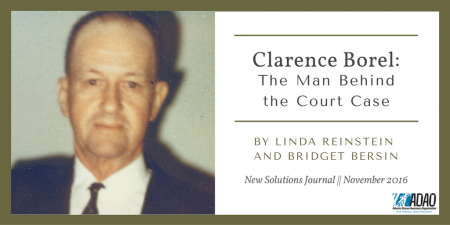Posted on December 19, 2016

It was a pleasure to collaborate with Clarence’s granddaughter, Bridget Bersin, on this engaging, personal account of Clarence’s path to becoming one of the most revered figures in asbestos history. Clarence’s story is important because it secured legal rights for occupationally exposed asbestos victims, but it’s also important because it shows the power of one person — or one family — to make a world of difference.
As you all know, I write a lot, but publishing this in an academic journal is a true honor. New Solutions: A Journal of Environmental and Occupational Health Policy (NEW) is a peer-reviewed journal that explores the growing, changing common ground at the intersection of health, work, and the environment. Their readership is both the academic and educated lay audience. The Journal strives for an international focus “to affect the public health policy discussion and shake up the policy debate.” For me, New Solution has the perfect audience for Clarence’s inspirational story.
New Solutions does not provide its content for free, but if you’d like to read the engaging story of the man who won the courtroom for asbestos victims, you can purchase the article from Sage Pub here. I’m sure you’ll find Clarence’s story, so beautifully told by his granddaughter, just as inspiring as I did.
Abstract for ‘Clarence Borel: The Man Behind the Court Case’
Borel v. Fibreboard Paper Products Corporation is the 1973 landmark case that paved the way for successful litigation against the asbestos industry. Clarence Borel’s granddaughter shares recollections of the reluctant man behind the court case.
In unity,
Linda
